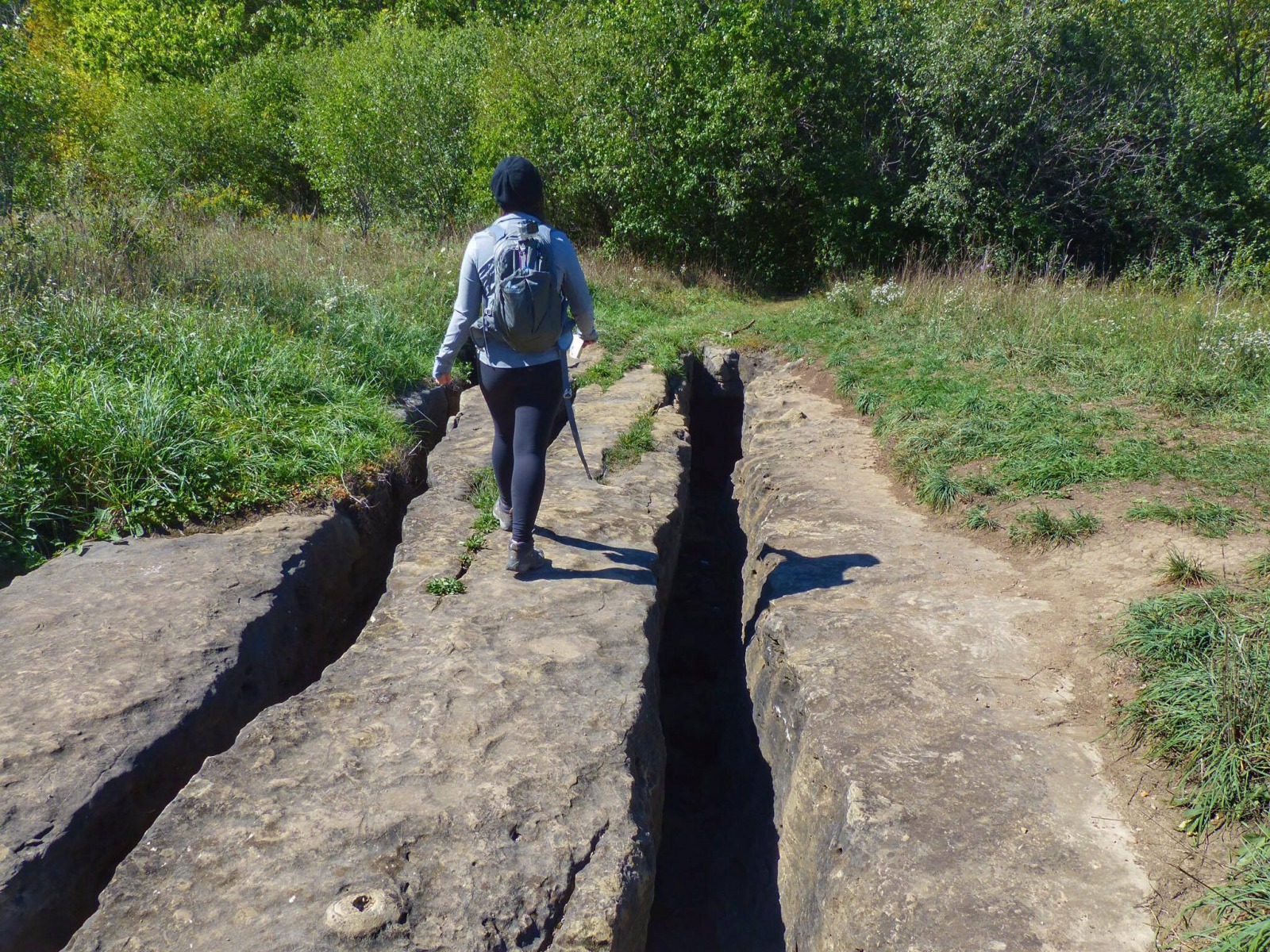
When you think of hiking, I bet you don’t think you would come across crevices, caves and karsts did you? Well, at Eramosa Karst Conservation Area, the park is filled with treasures including forests, meadows and underground streams. But before we explain more about that, you may be wondering: what is a karst? Karsts are geological formations that include underground drainage, caves and passages caused by dissolving rock.
As a great spot for a healthy hike, Eramosa Karst’s interesting geology makes it a one-of-a-kind place to visit in Hamilton. There are over four kilometres of trails, boardwalks and bridges that take you through forests, meadows, geological formations and a natural amphitheatre.Here, you’ll find three trails here that range from easy to moderate difficulty: Karst Features Trail, Meadows Trail and Bobolink Trail.
One of our favourite parts about Eramosa Karst was being able to learn more about karsts while exploring these geological formations. Before we visited this park, we had no idea what a karst was. There are several panels displaying facts about the area’s natural history throughout the park. Being able to read more about karsts while discovering them on trails was a unique experience for us. We also really loved seeing Pottruff Cave and Nexus Cave.
When it comes to hiking, it’s always best to come prepared. Hiking can be a challenging activity, but it’s a very rewarding experience. Over time, we’ve figured out some do’s or don’ts that have helped us and may help you too!

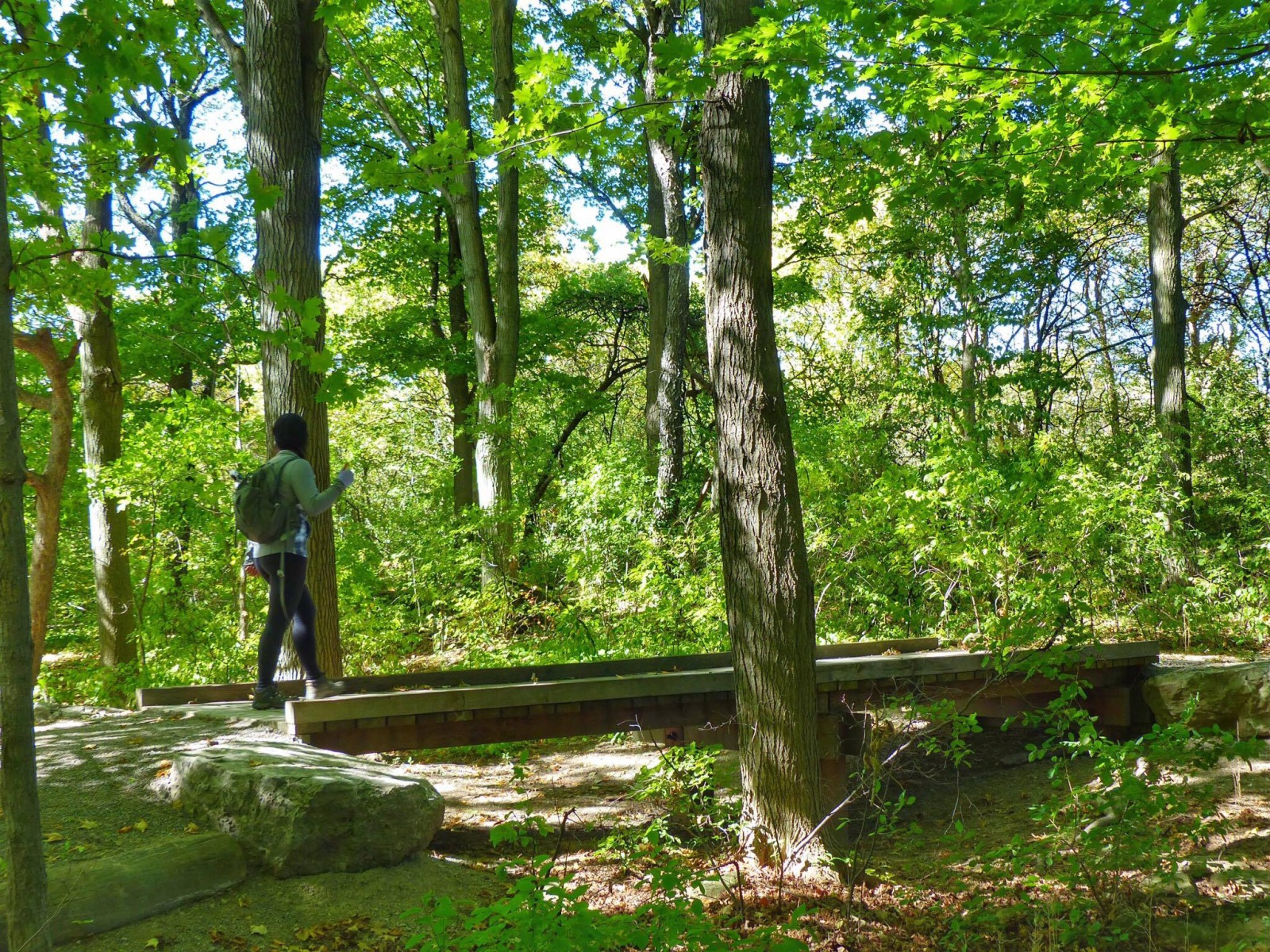
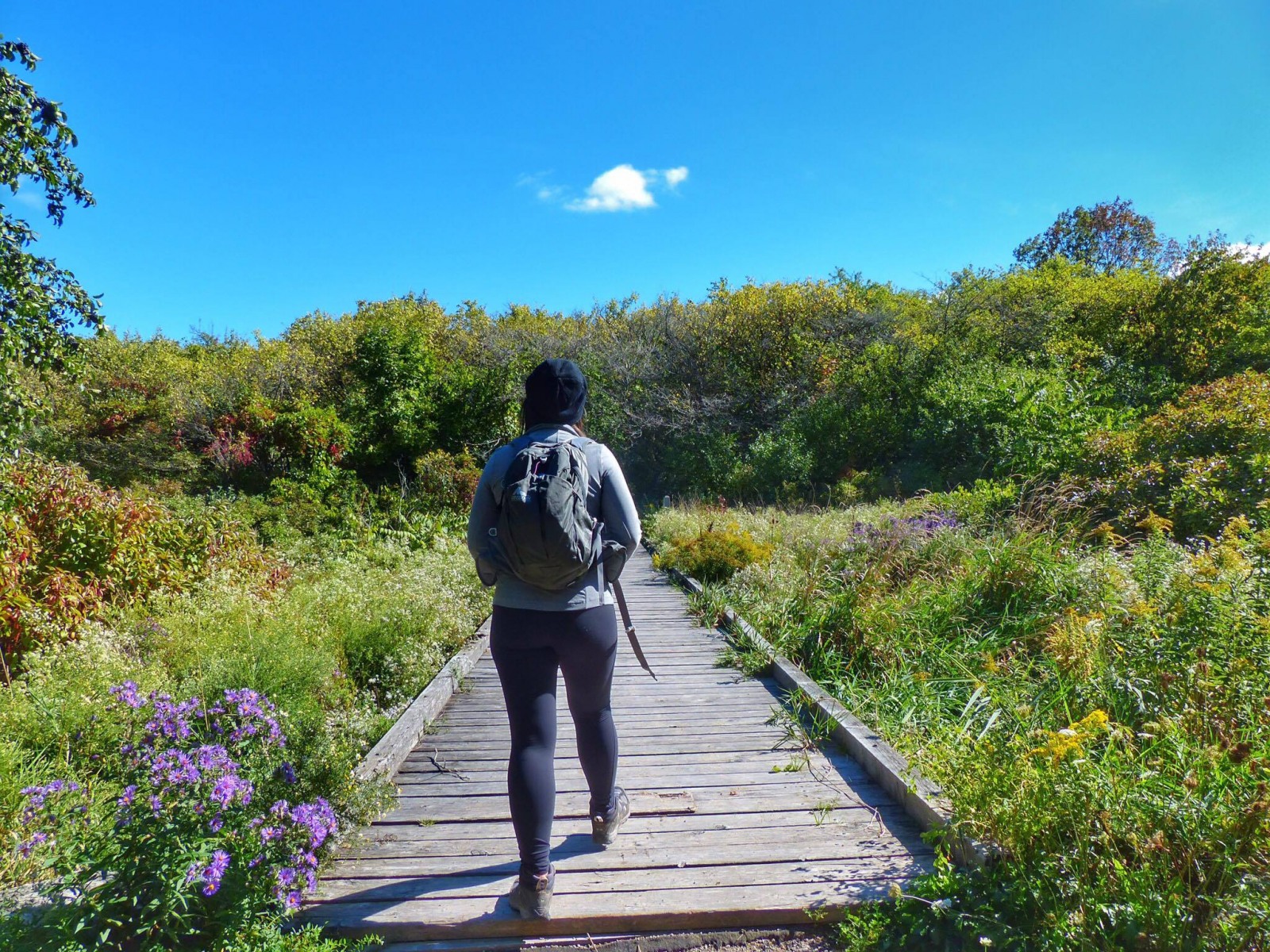
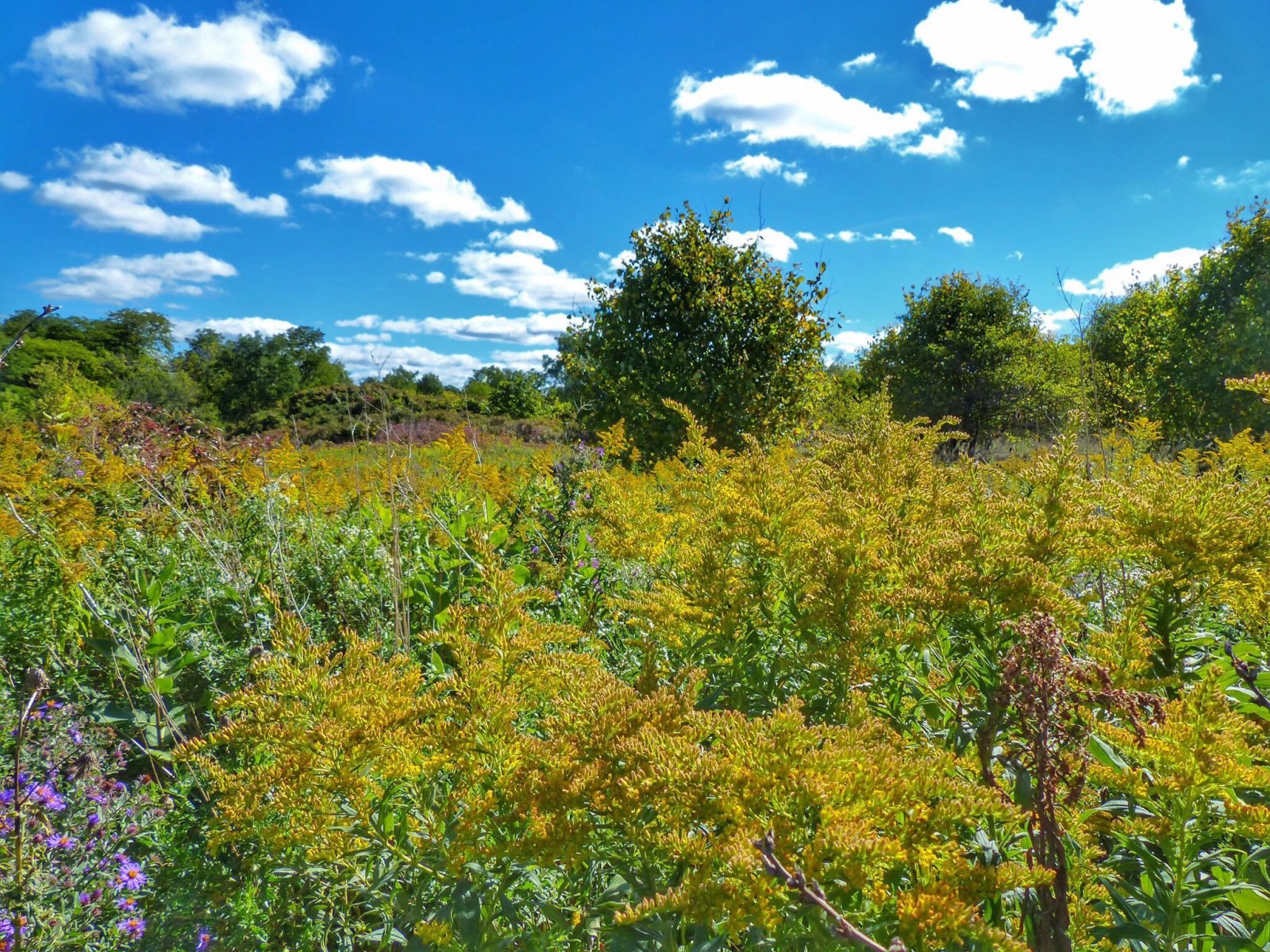
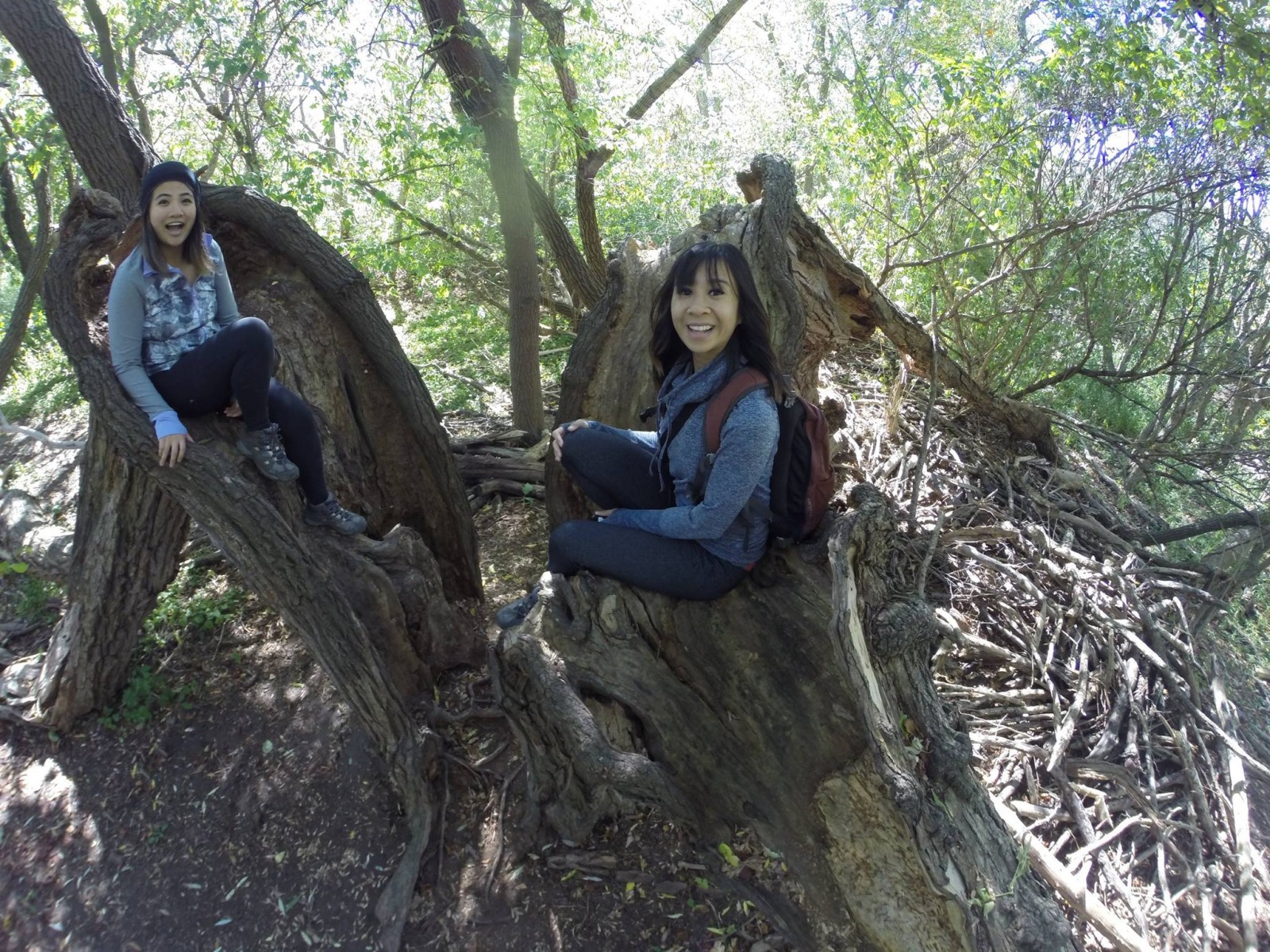
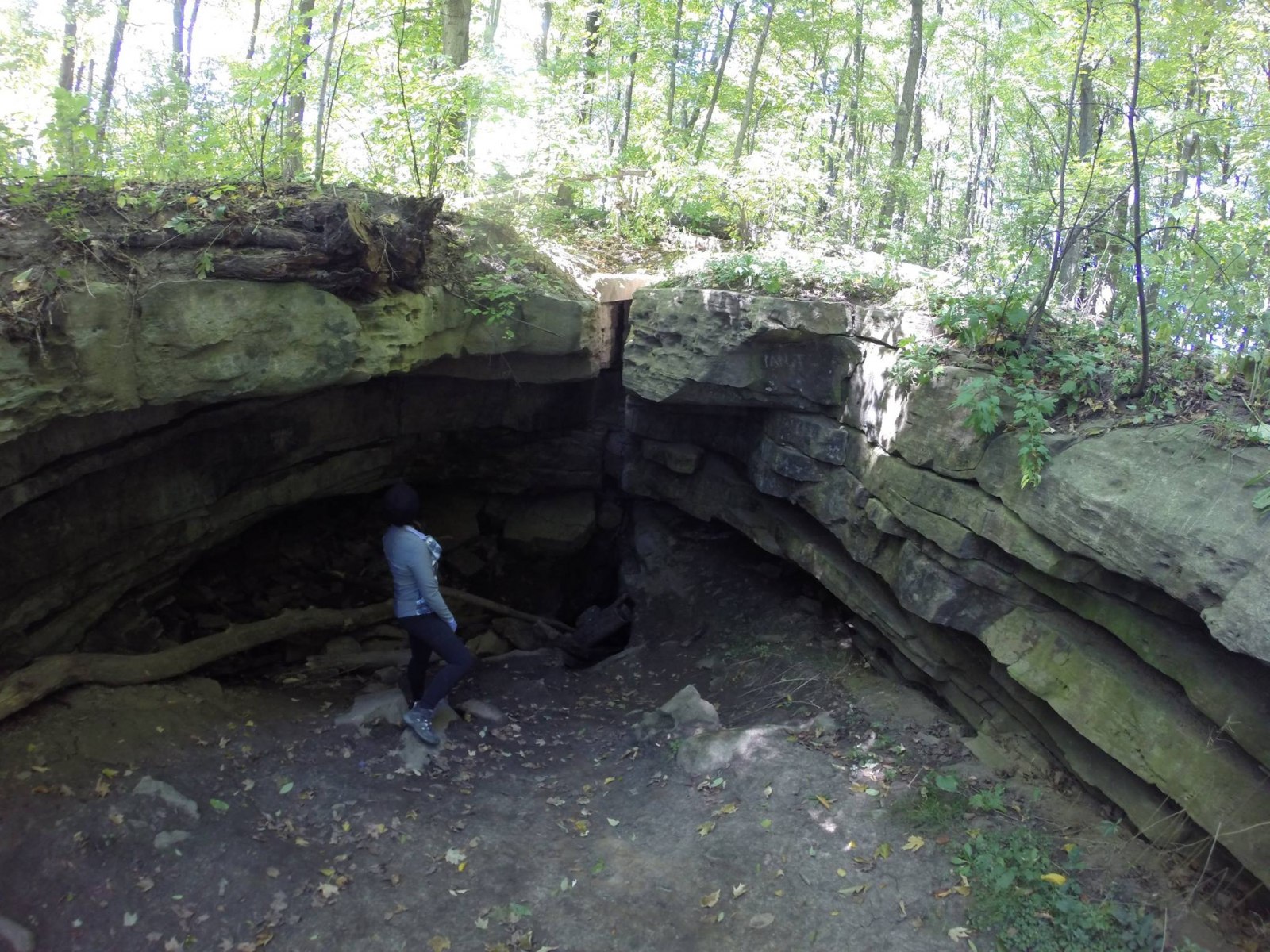
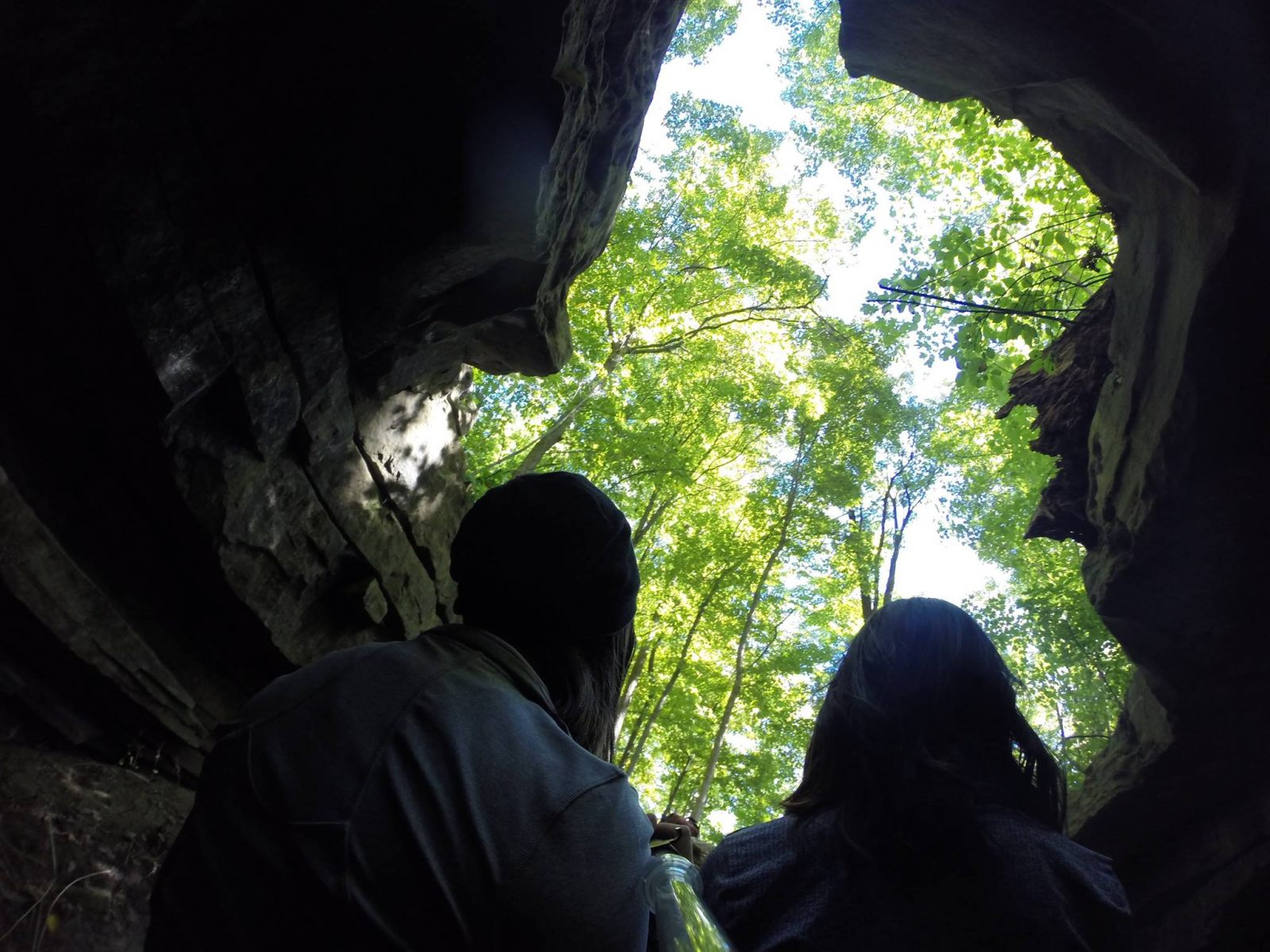
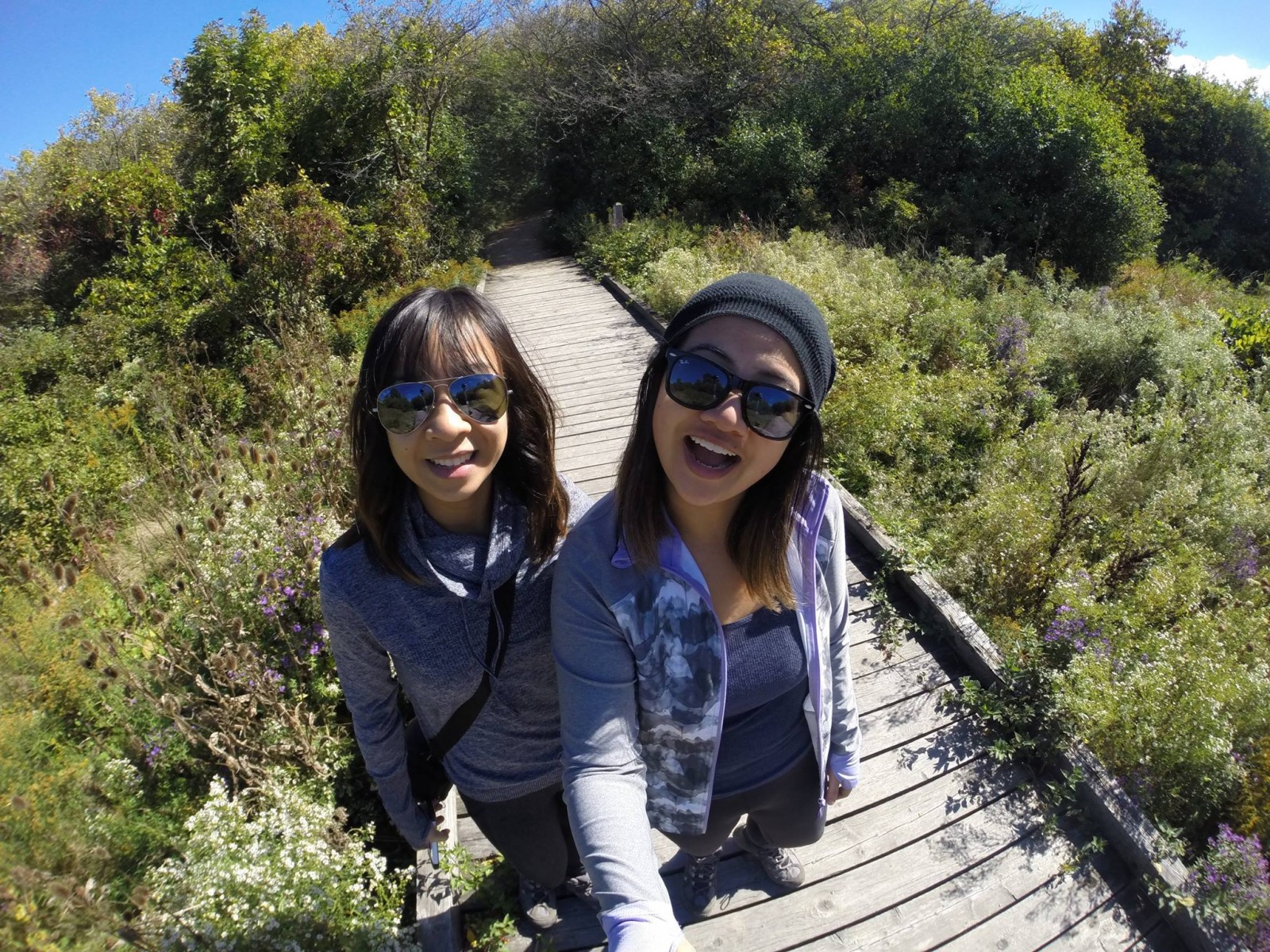
Do:
- Stay on the trail
Always stay on the marked trail since they’re created to maintain the environment. Conservation areas work very hard to protect the ecosystem while offering a chance for everyone to explore nature. But when you go off the beaten track, you can do enough damage in seconds that takes years to undo. Don’t veer off track! - Be prepared
Before you head out, make sure to research the trails and weather. Trails will vary in difficulty, so it’s good to find one that’s suitable for your fitness level. It’s also important to keep an eye out for the weather, so you can stay warm and dry. Remember to pack enough water and snacks, a phone, map, first aid kit, rain gear, warm clothes and your ID. - Hike with a buddy or group
For your safety, never hike alone – especially in bear country. If your friend can’t join you, consider joining a hiking group instead. Anything can happen out on the trail and you may be many kilometers from any help. Having someone with you can save your life. Plus, it’s always more fun to hike with a friend! - Watch your time
Be sure to keep an eye on the time when you’re on your hike. At the beginning of the hike, you’ll have more energy and can finish more of the trail in a shorter period of time. However, as you continue to hike, you’ll get more tired and slow down. Because of this, it’s always better to plan extra time for breaks. If you happen to be hiking after the sun goes down, make sure to pack a flashlight or headlamp to help you see in the dark.
Don’t:
- Don’t deface, damage or disturb any property or wildlife
When you’re on a trail, don’t vandalize any property or damage wildlife. As the saying goes, “take only photos, leave only footprints.” - Don’t litter. Pack out what your pack in.
Whatever you bring onto the trail, you should also take out with you. It helps to bring a small garbage bag so you can keep track of your trash. At Eramosa Karst, it may seem easy to throw garbage around in the cave or sinkholes because it can be easily hidden. But trails are best preserved when they are clean. Please respect the area! - Don’t tackle a trail that’s too difficult
Sometimes it’s the difficult trails that offer the most beautiful views, but you have to remember that your safety is key. If you get too tired from the hike, head back to the beginning of the trail and try again when you’re feeling better. Trust us: we’ve had to turn back a few times. - Don’t underestimate nature
Depending where you’re hiking, the weather can change in an instant. Storms can be dangerous if you’re in the middle of nowhere without shelter. So make sure to keep an eye out for weather changes. If you know that there’s going to be a big storm, avoid heading out to a trail. If you happen to hike in an area with bears, it’s really important to make a lot of noise to let a bear know of your presence. Also, remember to carry bear spray with you at all times on the trail – you never know when you may have to use it!
Eramosa Karst Conservation Area Q&A:
- Where is it located? It’s based in Stoney Creek at Upper Mountain Road.
- What are the hours of operation? The park is open all-year round for day use until sunset.
- Is there an admission fee? No.
- Is there a parking fee? Yes.
- What’s the difficulty of the trails? There are three trails: Karst Features Trail, Meadows Trail and Bobolink Trail. They range from easy to moderate difficulty.
- Can I bring my dog? Of course! Dogs are welcome, but must be leashed.
- What are the geological features? The Eramosa Karst contains examples of 16 different karst features including soil pipes, sinkholes, sinking streams, dry valleys and caves and passages. The Conservation Area is home to a 335 metre-long cave, which is the tenth largest in Ontario. There is also a natural dolomitic limestone bridge at the entrance of one of the sinkholes.
- What can I do or see here? You can hike and bike the trails, and try geocaching or cross-country ski and snowshoe in the wintertime.
